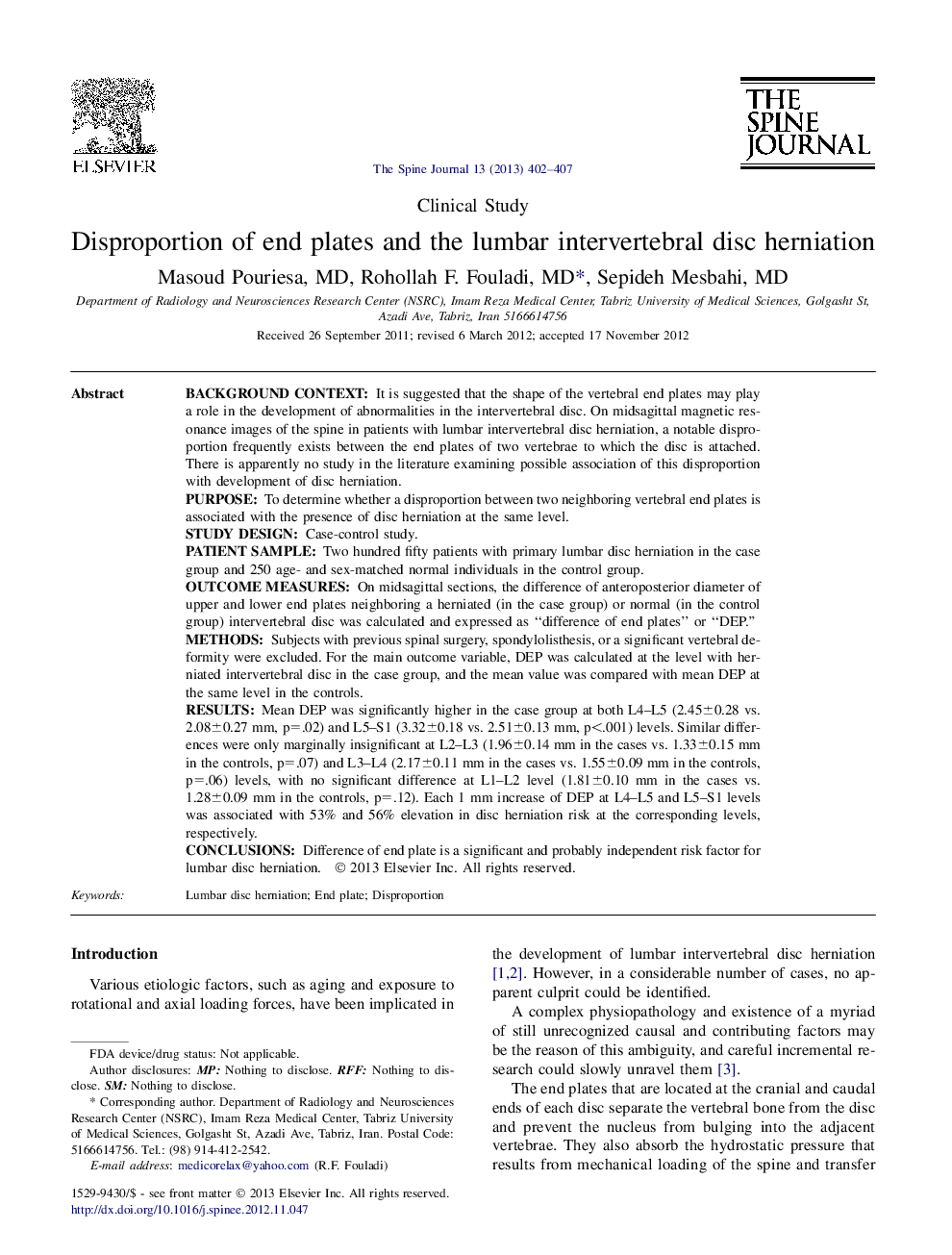| کد مقاله | کد نشریه | سال انتشار | مقاله انگلیسی | نسخه تمام متن |
|---|---|---|---|---|
| 6212666 | 1268587 | 2013 | 6 صفحه PDF | دانلود رایگان |
Background contextIt is suggested that the shape of the vertebral end plates may play a role in the development of abnormalities in the intervertebral disc. On midsagittal magnetic resonance images of the spine in patients with lumbar intervertebral disc herniation, a notable disproportion frequently exists between the end plates of two vertebrae to which the disc is attached. There is apparently no study in the literature examining possible association of this disproportion with development of disc herniation.PurposeTo determine whether a disproportion between two neighboring vertebral end plates is associated with the presence of disc herniation at the same level.Study designCase-control study.Patient sampleTwo hundred fifty patients with primary lumbar disc herniation in the case group and 250 age- and sex-matched normal individuals in the control group.Outcome measuresOn midsagittal sections, the difference of anteroposterior diameter of upper and lower end plates neighboring a herniated (in the case group) or normal (in the control group) intervertebral disc was calculated and expressed as “difference of end plates” or “DEP.”MethodsSubjects with previous spinal surgery, spondylolisthesis, or a significant vertebral deformity were excluded. For the main outcome variable, DEP was calculated at the level with herniated intervertebral disc in the case group, and the mean value was compared with mean DEP at the same level in the controls.ResultsMean DEP was significantly higher in the case group at both L4-L5 (2.45±0.28 vs. 2.08±0.27 mm, p=.02) and L5-S1 (3.32±0.18 vs. 2.51±0.13 mm, p<.001) levels. Similar differences were only marginally insignificant at L2-L3 (1.96±0.14 mm in the cases vs. 1.33±0.15 mm in the controls, p=.07) and L3-L4 (2.17±0.11 mm in the cases vs. 1.55±0.09 mm in the controls, p=.06) levels, with no significant difference at L1-L2 level (1.81±0.10 mm in the cases vs. 1.28±0.09 mm in the controls, p=.12). Each 1 mm increase of DEP at L4-L5 and L5-S1 levels was associated with 53% and 56% elevation in disc herniation risk at the corresponding levels, respectively.ConclusionsDifference of end plate is a significant and probably independent risk factor for lumbar disc herniation.
Journal: The Spine Journal - Volume 13, Issue 4, April 2013, Pages 402-407
